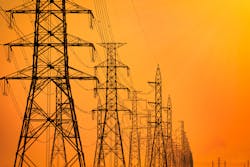At the National Electrical Safety Code® (NESC®) workshop in June, hosted by IEEE Standards Association (IEEE SA), opportunities, barriers, and technical aspects of the 2023 edition of the NESC were discussed. The workshop brought together more than 100 individuals who are enthusiastic about the NESC, its related fields, and adoption of the Code in many countries. Additionally, participants heard from speakers including Nelson Bingel III, past chair of the NESC; George Arhos, international representative at the IBEW; Ernest Gallo, director at Ericsson, Inc.; and many more. Some of the topics included major changes in the 2023 edition of the NESC; policy-making resiliency; the model for education, collaboration, and resolution for joint use issues; fault-managed power systems; industry connections; and more.
Published exclusively by IEEE and updated every five years to keep the Code up to date with changes in the industry and technology, the NESC sets the ground rules and guidelines for the practical safeguarding of electric utility workers and the public during the installation, operation, and maintenance of electric supply, communication lines and associated equipment. The NESC is primarily applied by the nation’s electric and communications utilities and may be adopted by state regulatory commissions for investor-owned utilities. The 2023 version, edited by IEEE SA, was published in August 2022 and became effective on February 1, 2023.
Revisions in the 2023 NESC are intended to provide clarity, ease of use, and overall safety. The goals of the revision process include changing and keeping the Code relevant, making it more user-friendly/easier to understand, and accommodating the emergence of innovative technologies.
Some of the changes in the 2023 edition include:
- New rules 190-195 provide guidance for photovoltaic (PV) generating stations.
- Rule 161C adds an exception for providing short-circuit protection if less than 1,000V and short lengths of insulated power cables.
- Rule 320B is revised to clarify separations apply to communications and supply in different conduit systems.
- Table 410-4 adds new content based on the latest arc-flash testing on live-front transformers.
- Rules 234 B1, C1, D1 are revised to better present vertical and horizontal wind clearances and coordinate requirements with new Table 234-7.
- Rule 124A is revised and now provides correction factors for clearances on higher elevations.
- Table 253-1 is revised to reduce load factor for fiber-reinforced polymer components under wire tension, including dead ends, for Grade C construction.
- Rule 410A is revised to require a specific radio-frequency safety program for exposed employees.
Join our efforts!
The 2023 NESC is the product of hundreds of contributors and peer reviewers and the careful editing of the IEEE SA. We welcome your participation in these efforts. For more information, please visit standards.ieee.org to learn more and NESC Products.
Order the 2023 NESC and Handbook today
The 2023 NESC and handbook are available for purchase at the IEEE Standards store and available for subscription at the IEEE Xplore digital library.
Ernesto Vega Jánica serves as senior manager of opportunities development for IEEE Standards Association. Recognized as the 2017 Fire Protection Engineer of the Year by the Society of Fire Protection Engineers (SFPE), New Jersey Chapter; and awarded the 2011 Tyco Patent Prize as the author of a patent application on visual fire alarm notification devices, Vega Jánica has authored multiple technical papers and international presentations in the engineering fields, as well as in applications of optimization models. He earned a Bachelor of Science in Electrical Engineering from Universidad del Norte and a Master of Science in Project Management from Escuela Colombiana de Ingenieria, in Colombia, South America, after which he earned a Master’s Degree in Fire Protection Engineering from the University of Maryland College Park. Vega Jánica is also an instructor of international standards.
About the Author
Ernesto Vega Jánica
Ernesto Vega Jánica serves as senior manager of opportunities development for the IEEE Standards Association. Recognized as the 2017 Fire Protection Engineer of the Year by the Society of Fire Protection Engineers (SFPE), New Jersey Chapter; and awarded the 2011 Tyco Patent Prize as the author of a patent application on visual fire alarm notification devices, Vega Jánica has authored multiple technical papers and international presentations in the engineering fields, as well as in applications of optimization models. He earned a Bachelor of Science in Electrical Engineering from Universidad del Norte and a Master of Science in Project Management from Escuela Colombiana de Ingenieria, in Colombia, South America, after which he earned a Master’s Degree in Fire Protection Engineering from the University of Maryland College Park. Vega Jánica is also an instructor of international standards.
